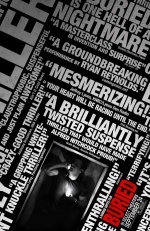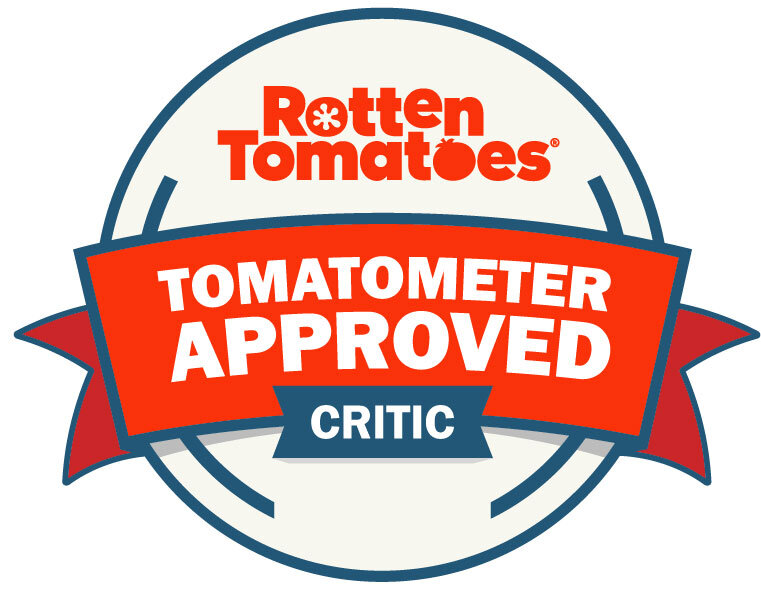By George, He's Got It!
2010 // UK // Tom Hooper // March 16, 2011 // Theatrical Print (Chase Park Plaza Cinema)
C+ - The King's Speech is a more or less pleasing slice of entertainment, one that snugly fulfills the familiar parameters established by countless portrayals of personalized Struggle Against Adversity. The fact that the protagonist in this instance is the reluctant monarch of a corroding empire--and that his mentor-rival is played by a pithy and unflappable Geoffrey Rush--only amplifies the film's surface allure. As cinema, however, Tom Hooper's film is a distressingly thin and vacant work, undergirded by an implicit and almost snotty presumption that if the beats are recognizable and the ornaments polished, then artistic vitality is a given. Hooper's previous work, The Damned United, likewise suffered from dramatic triteness, but was nonetheless a remarkably nimble and inventive film, persistently surprising with its subversion of sports film conventions and its acerbic thematic grumblings. The King's Speech, by contrast, rests almost entirely on musty appeals to emotion, whether garbed in its distinctly British ethos of duty and perseverance or in the admittedly superb design of its period trappings. Better writers than I have skewered the film's ahistorical flourishes, elisions, and reversals, but this isn't the place for a debate about factual accuracy in narrative features. Even if approached as a work of fiction, The King's Speech is handsome but woefully timid stuff, perhaps the mildest picture to clinch a Best Picture statuette in twenty years.
The story is perhaps familiar to Anglophiles who have followed the travails of the House of Windsor: In the years between the World Wars, Prince Albert (Colin Firth), second son of England's King George V, begins working with speech therapist Lionel Logue (Rush) in order to overcome his life-long stammer. This effort becomes especially crucial after the prince's older brother Edward abdicates the throne, after which Alfred is crowned King George VI, even as Europe lurches towards war. There's not much more to the tale than that, and the film presents the king's September 3, 1939 radio speech to the nation as the dramatic climax of his personal clashes with Logue and his own psychological struggles. It's remarkably slender stuff on which to hang 118 minutes, but it is to Hooper's credit that he manages to keep the proceedings brisk and focused.
Stylistically, the film possesses a rather shameless, preening affection for the grandiose, but the narrative itself is anything but puffy, hewing as it does so firmly and neatly to the framework of the "personal struggle film" sub-genre, complete with a second act rift between teacher and student. Things hum along quite nicely, assisted by the estimable performers, particularly Rush, whose lightning wit and disarming presence serve to leaven all the royal starch with slatherings of modern, populist sarcasm. Helena Bonham Carter weaves a similar spell, humanizing the queen consort Elizabeth as a droll and unfaltering lady, assured in a position that she acknowledges is prestigious but powerless. Firth is game and mainly compelling in a role that demands not only a measure of vocal craft, but also character traits slightly outside his usual purview. Firth presents Albert as a morally upright but altogether weak man, suffused with an unpleasant blend of meekness and hotheadedness, and overlain with a pall of persistent, debilitating terror. The result is that while Albert is hardly appealing as a hero, The King's Speech succeeds in evoking authentic empathy for his plight. Here is a man in an exceptional position who happens to be afflicted with a disability that makes his principal responsibility awkward, if not impossible.
Of course, as with nearly all films about monarchs, Hooper's work is deeply invested in the notion that princes are just Regular People at bottom. The King's Speech flexes this message time and again, revealing it most conspicuously through Logue's obstinate demand for man-to-man equality during his sessions with Albert. This conceit never entirely persuades, but, admittedly, not due to a half-hearted or graceless presentation. Hooper is palpably convinced that his tale has a core of meritorious humanity, and he is an adept enough director to convey that sincerity on the screen. The problem, of course, is not the earnestness of the message, but its glibness, containing as it does no particular insights into the psychological landscape of those suffering form speech impediments, nor into the novel problems associated with even a declawed dynastic monarchy in the modern age.
The building blocks of The King's Speech are overwhelmingly direct and burnished pleasures: an evolving friendship between two men from different worlds, stymied at times by conflict; a man who must overcome his personal demons and lingering daddy complex, as much for himself and his loved ones as for the greater good; and, naturally, luscious design in the sets and costumes that flawlessly evokes Depression-era Britain in all its opulent, chic, and grubby glory (depending on the scene). The film's whole approach is carefully and exasperatingly tasteful, and while this is hardly inexplicable in the current environment of awards-bait prestige films, that doesn't make it any less bothersome. (Heck, even 2009's undeserving Best Picture winner, the unruly, unconvincing, and problematic Slumdog Millionaire, was at least energetic and even formally daring.)
The slightness of The King's Speech is perhaps most disappointing given that there is so much to admire on the surface, from Eve Stewart's production design--which glides effortlessly between sumptuously warm and bleakly cool--to stately work from cinematographer Danny Cohen. Like The Damned United, this film further establishes Cooper's enviable eye for aesthetic composition, especially his potent use of negative space. The film's only flourish is the director's employment of a wide lens for select shots, a perhaps gaudy touch that nonetheless effectively underlines Albert's anxious awareness of the public scrutiny that is continually focused on him. Ultimately, it would be stupidly contrary to dismiss Hooper as an untalented director, or The King's Speech as a poorly-made film. However, one can only wonder why such talent has brought to bear on a tale as conventional and emotionally limp as a Sunday school recital.









